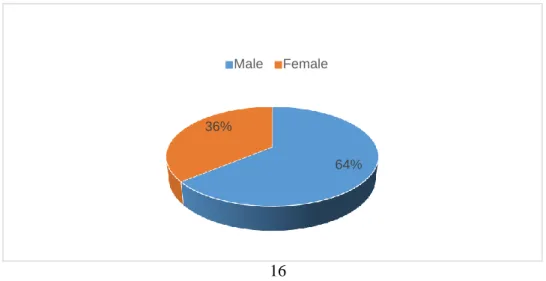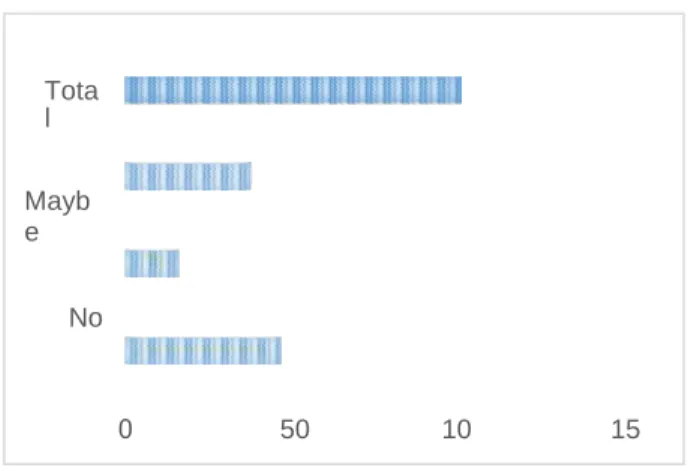I declare that this thesis was made by me under the supervision of The research was conducted by a questionnaire using a sample of 100 distributed to 100 respondents in different types of society. The industrial sector must take responsibility for its responsibilities towards the proper management of waste effluent, as they contribute to about 50% of environmental pollution.
This type of pollution is one of the worst sources of pollution in the world. It is also one of the unhappiest countries in the world, with a gross national product (GNP) per capita of $260, and where approximately 60% of the population lives below the poverty line (WB, 1993).
Statement problem
The introductory chapter describes the introductory information of the research study, it includes a discussion about the background, problem statement and objectives of the study. 1.1 Background. Industrial pollution also affects air quality and can permeate the soil, causing extensive environmental issues. Less than 40 percent of the country's population approaches current essential medical care (PHC) administrations past child vaccinations and family planning (BBS, 2000; . Abedin, 1997).
Due to the high rate of population growth and level of need, Bangladesh has set a seven percent GDP growth target in the Interim Poverty Reduction Strategy Paper (iPRSP) to meet the improvement targets by 2015. However, industrialization brought with it a series of problems. Industries tend to be clustered and highly polluting.
Industrial Pollution and Effects on Health
Factors causing Industrial Pollution
Objectives of the study
LITERATURE REVIEW
- Introduction
- History of Industrial Development in Bangladesh
- What is Industrial Pollution?
- Types of wastes
- Effects of industrial Pollution .1 Water pollution
- Air pollution
- Controlling Industrial Pollution Control at source
Bangladesh is one of the most environmentally vulnerable countries in the world, with a population of about 140 million in an area of 147,000 km2 (GoB, 2008). In fact, 48.4 percent of the population are involved in the agricultural sector, 24.3 percent in industrial activity (small to large scale) and 14.2 percent are working in the service sector (GoB, 2008). On the other hand, the contribution of the industrial sector to GDP increased from about 18 percent in 1980 to 30 percent in 2007.
Thus, the industrial sector has emerged as a key player in generating revenue for growth and development in the country. In fact, the government has taken a number of initiatives, including the establishment of industrial estates, export processing zones, etc. By the end of the 1990s, the country's industrial infrastructure was earmarked for the establishment of 60 industrial estates and two Export Promotion Zones (EPZs).
The development of the RMG industry has a huge contribution to export earnings, employment generation, poverty alleviation and women empowerment in the country. Other types of industries, including textiles, chemicals and pesticides, rubber and pulp, pharmaceuticals, tanneries, cement, food and sugar, and fertilizers, were also rapidly established in different areas of the country. The effects of industries were evident everywhere in the world from the industrial.
Wars have been fought for dominance, and some parts of the world are still striving to rise from the ashes in the 21st century. Iron and steel companies, as well as power stations, emit industrial byproducts in the form of gases. Many of the gases produced are greenhouse gases, which change the temperature of our atmosphere and contribute to global warming.
METHODOLOGY
- Study Area
- Data Collection Method
- Primary data
- Questionnaire survey
- Secondary data collection
- Research design
- Limitations of the study
My study area was Bangladesh at Mirpur area. This study mainly focused on the impact of industrial pollution and how it has affected the people. Primary data is first-hand information, data collection using various methods such as questionnaire survey key information interview. When you do research, you need to collect your data many techniques, so when you try to do this research, I was using questionnaire that participated a lot of students and different types of society, at that time I was prepared questionnaire about the impact of industrial pollution on human health in bangladesh my case study dhaka city.
Information about the impact of industrial pollution on human health, so secondary data information is obtained from various relevant books, articles, reports, maps, magazines, research papers, websites, daily newspapers, libraries, etc. The design allows the analyst to focus on research. techniques that are apocalyptic to the subject and set their investigation for progress. It refers to the general procedure used to compete exploration that characterized a brief and legitimate agreement to address the raised research question, through variety, understanding, investigation and conversation of information.
During this study I conducted many questionnaires related to the impact of industrial pollution and many students and different types of society participated. Second, I had gathered most of the research online because Coved19 was facing worldwide at that time. It was very difficult to go out and also the countdown.
RESULT AND DISCUSSION
- Introduction
- Section A: Demographic Profile of the Respondents
This chapter focused on presentation and data analysis interpretation of the study; the researcher investigated the effect of industrial pollution on human health, this also covers three parts of the research, so first part is introduction, second part demographic of the respondents, while third part is interpretation of research question and data presentation. The above table shows that the majority 64.0% were men, while only 36.0 of the respondents were women, this table shows that the male respondents are more than the female respondents. The table above summarizes respondents by education level, respondents level categorized High school Diploma, Associate Degree, Bachelor Degree and Master Degree level.
The table above summarizes the industries located in the areas of the respondents rate 33.7% of the selected respondents (Yes), rate 53.5% of the selected respondents (No), 12.9% of the selected (Maybe). The above table 31.0% of the opinion of the selected respondents say Yes, 55.0% rate the majority of the selected respondents No and 14.0% say maybe. The above table 22.2% of the opinion of the selected respondents say Yes, 43.4% estimate the majority of the selected respondents No and 34.3.0% say maybe.
The table above 74.0% of the respondent's opinion selected Say Yes, 113.0% rate majority of respondents selected No and 13.0% say maybe. The above table 32.7% of the respondent's opinion chose Say Yes, 58.4% rate majority of respondents chose No and 8.9% say maybe. The above table 23.8% of the respondent's opinion selected Say Yes, 76.20% rate majority of respondents selected No and rate 0.0 maybe.
Table 12: - Do you agree Bangladesh is one of the places where industrial pollution affects health and sometimes people die due to pollution. The above table 86.1% of the respondent's opinion majority chose (Yes), rate 13.9% respondents chose (No) and 0.0 rate say (maybe). The table above shows the majority respondent's opinion rate 75.2% selected (Yes), rate 7.9% respondents selected (No) and 16.8% selected (maybe).
The table above summarizes the opinion rate of 40.0% of respondents selected for Climate Change, the rate of 25.0% of respondents selected for Health Problem, the rate of 15.0% of respondents selected for Health Problem and the rate of 20.0% of respondents selected for Environmental Problem . The above table summarizes the majority of respondents suggest to build industrial industries outside the city rate 60% selected, rate 15.0% Destruction of industrial pollutants, rate 10%.

RECOMMENDATIONS AND CONCLUSION
- Recommendations
- Conclusions
Modifying the natural environment by creating more trees and plants can help bring untamed life back to their homes, and trees can help purify the air with sufficient oxygen and act as a cushion against the climate. Adopting new innovations, productively preparing workers for safe use and improvement of the best waste disposal innovation, and being more honest about the use of unrefined substances can help control modern pollution at source. . There should be stricter guidelines for making a move against organizations that don't follow the proper convention and bigger prizes for organizations that do work properly.
Assuming that unsafe effects are found during the survey, important activities should be created and maintained to address the adverse results. Many residents feel that the growth in the number of industrial units in the region is to blame for these issues. They believe that sewage entering the area's surface water bodies, including the khal and beel, degrades the quality of the water and as a result they are unable to utilize it for the activities it was previously used for, such as bathing and washing animals.
Skin problems, for example, can be caused by the high pH of the water, which has been found to be as high as 10.9 in some khal areas (Chadwick and Clemett, 2003). The high pH level is likely to be the result of the massive amounts of burning bang and soft drink residue used in the color system to achieve a pH between pH 10.5 and pH 11.5. An investigation conducted with local workers and health workers in the city of Dhaka demonstrates that neighborhood networks face many health problems that could be.
Individuals from the local area and wellness workers are of the opinion that the prevalence of various medical conditions is moderately high nearby and expanding. The public authority needs to examine this issue sincerely and go far in implementing existing guidelines and guidelines to reduce the welfare hazards of the networks. The strategic implications of this review are that alleviation of modern pollution, think of other relevant.
Is there solid matter or waste generated from this facility that is discharged to surrounding areas. Do you agree that Bangladesh is one of the places where industrial pollution affects health and sometimes people die as a result of pollution. Do you think that certain diseases like respiratory problems, asthma and other health complications can be caused by industrial pollution.
Do you think that polluted water used by industries causes cancer, diarrhea and other similar diseases? On a scale of 1-10 how would you rate your knowledge of the impact of industrial pollution on the environment. On a scale of 1-5 you will recommend that the government and relevant authorities develop policies and regulations to regulate the impact of pollution on human health and the environment.


